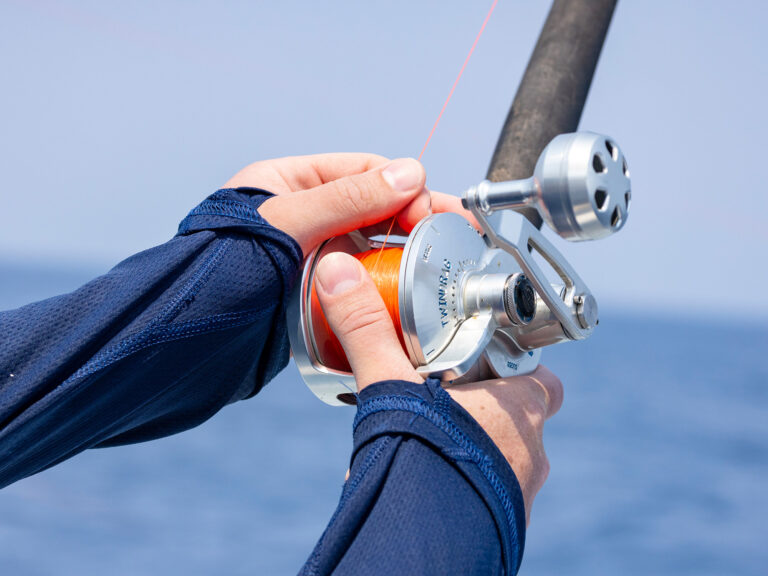
SPF1013_FTR_1
When it comes to blue‑water fishing, I have been called a dinosaur, an archaic thinker, technologically challenged, ADD, ADHD, dyslexic and much worse. I find amusing the dichotomy in blue-water fishing between the use of technology versus the most basic fishing techniques.
I remember having a crab salad at the dock in St. Thomas, when a lightning bolt connected with a brand-new megayacht in the 70-foot class, and a second bolt struck a North Carolina single-engine sport-fisher berthed right next door.
The megayacht had more technology on it than a World War II battleship — the engines, completely electronic, were monitored by a computer center somewhere in the Midwest, there were cameras in the engine room, screens on the bridge and in the cabin, and, of course, global communications, electronic instruments, automatic oil-change systems, GPS, SATNAV, electronic controls, electronic standby controls, electronic cockpit controls, ghost night radar with synthetic vision that can see through the fog, AC and DC inverters, exchangers, amplifiers, and enough antennas to look like a sugar-cane field.
The boss’ Grumman G5 would land at the airport in 15 minutes, and the captain of this $5 million-plus yacht faced the absolute terror of telling his boss that his boat was dead in the water from the little lightning strike, and could remain there for weeks to get his piece of crap even started again.
Besides having electronic outriggers on board, this rig had every single high-tech toy known to man — vibrating and scent-emitting lures, double hooks, single hooks, offset hooks and carbon crimped leaders. But it was all tied to the dock.
The other boat hit by lightning, berthed to starboard, was a 60-foot North Carolina boat with a single 871N diesel, natural aspirated and mechanically controlled. This baby had a battery, small generator, Teleflex cable controls going to a Morse Head, single-pole outriggers, a mechanical pump-driven livewell, washdown, tuna tubes, a couple of NAV lights, and a VHF connected with some cheap wiring that had held together over the years. This vessel was taking off one day in 14 of some of the best blue marlin fishing known to man.
The only damage to this boat from lightning was an automatic circuit breaker at the engine batteries. It took about four seconds to make the vessel fully operational again.
The owner of the megayacht had the captain on his knees begging the owner to fish one day on the North Carolina rig, since it would take at least 10 days to free up the computer analyst for his megayacht. The next day, the single-engine North Carolina Boat — non-turbocharged, non-blown-air cooled, non-hyper-electronic-monitored — headed for the fishing grounds with the boss of bosses in the cockpit. There were two 50-wides, two 80-wides and a beat-up cooler with broken latches. On top of that were 10 rigged, clean ballyhoo with J hooks and 25-foot leaders. There wouldn’t be any teasers because this boat was not there to tease; it was there to catch and release. There was no communication center on board so the captain could communicate with somebody on his Xbox thousands of miles away.
On the way back in, four tattered blue marlin flags fluttered in the breeze, attached to the outrigger lanyards with ballyhoo wire. The megayacht stayed tied to the dock for 56 days before the repairs were finished.
When do technology and the very basics of our sport collide, and when do opposing philosophies reach out to the future? Give me five horse ballyhoo on single hooks, and I’ll outfish you every day of the week if you’re tied to the dock.
Till next tide,
Capt. Tred Barta
For all things Tred, go to tredbarta.com.






